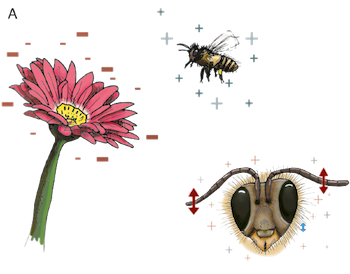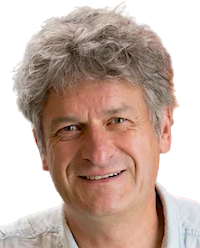Daniel Robert
University of Bristol, UK
https://research-information.bris.ac.uk/en/persons/daniel-robert
Date(s) : 26/01/2023 iCal
14 h 00 min - 15 h 00 min
Exchanging nutrition for pollination services, bees and flowers interact relying on vision, olfaction, touch, and humidity sensing. Recently, we have discovered that bees can also detect and learn about the weak electric field that arises when they approach a flower. This electric field is generated because flying bees are usually electrically positively charged whilst flowers tend to be negatively charged. A third component contributes to this electric interaction, the atmospheric potential gradient (APG) that is a consequence of the ionization of the atmosphere and the global electric circuit. I will present our current understanding of this triadic interaction (Bee-Flower-APG), but also specifically discuss the role that triboelectrification may play in the sensory ecology of terrestrial arthropods and plants. I will show that physical contact and friction between insects and their environment can generate charge separation and a Coulomb force. It will be proposed that this triboelectric charging may play a role in the biology and sensory ecology of plants and insects. The enticing possibility that many arthropod species, beyond bees, are capable of electroreception will be briefly addressed and discussed.

Emplacement
Virtual event
Catégories

